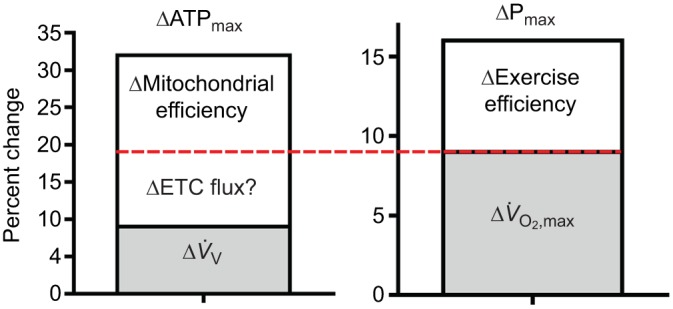Fig. 3.

Mitochondrial ATP production capacity and leg performance improvements with endurance training in the elderly. Average increases in mitochondrial ATP production capacity (ΔATPmax) of the quadriceps muscles and in leg power output at the aerobic capacity (ΔPmax) after a 6-mo endurance-training (ET) program. The red horizontal line separates the relative contribution of ΔV̇O2,max versus Δexercise efficiency to ΔPmax. This line also provides estimates of the contribution of ΔETC flux (ΔO2 uptake) versus Δmitochondrial coupling efficiency to ΔATPmax. The Δexercise efficiency at the whole-body level is likely due to Δmitochondrial efficiency because muscle fiber types were unchanged with ET. In addition, only half of the change in ΔV̇O2,max is accounted for by Δmitochondrial volume density [ΔV̇V(mt,f)] in muscle, which points to increased ΔETC flux per mitochondrion (ΔETC flux?) to account for the other half of the increased O2 flux. The question marks (?) indicate likely changes at the mitochondrial level based on the measured changes in whole-body and leg performance.
